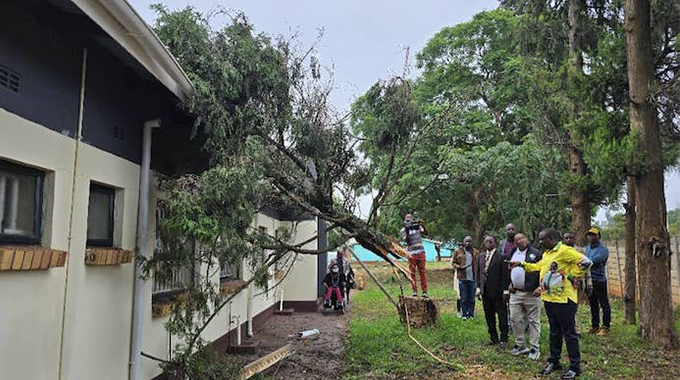Horticultural sector continues to bloom

Precious Manomano, Harare Bureau
More hectares have been put under horticultural crops this season, and a significant jump is expected in harvests, with the area under emerging crops such as blueberries increasing across the provinces as efforts continue to restore horticulture to a major export earner.
This comes as Government, through the National Development Strategy 1, is working with farmers and the private sector to revive horticultural production with a focus on exports, as well as improved household nutrition.
Horticulture used to be a major export earner, with regular cargo flights to Europe.
The Zimbabwe Horticulture Recovery and Growth Plan, which is targeted at reconfiguring the horticulture industry driven by the private sector, is paired with a transformative rural sub-sector under the Presidential Horticulture Scheme to benefit 2,3 million households, firstly through the village borehole programme and planting fruit trees.
According to the first seasonal crop and livestock and fisheries assessment report prepared by the Ministry of Lands, Agriculture, Fisheries, Water and Rural Development, there is a general increase in area planted for most horticultural crops in the the present agricultural season.
The area under blueberry increased by 54 percent from 328ha in the last season to 506ha in the present season and sugarcane recorded a 7 percent increase in area planted from 74 684ha to 79 722ha in the current season.

National Development Strategy 1 (NDS1)
“Area under tea area decreased by 5 percent from 5 951ha in the last season season to 5 662ha in the present season. 5. Area under Irish potato increased by 3 percent from 23 241ha to 23 982ha in the current agricultural season,” said the ministry.
The report also indicates that the number of village nutrition gardens currently stands at 7 091, covering an area of 6 277,8 ha, with 80 percent of the gardens being functional, with an area of 5 022ha currently under production.
Distribution of rainfall was generally good throughout the season. Wet spells were more prevalent in most provinces.
The wet spells resulted in some nutrient deficiency, especially nitrogen, as well as some water logging which led to yield reduction.
Nitrogen deficiency was also compounded by the shortage and high cost of nitrogenous fertilisers. Experts have suggested splitting nitrogen fertiliser applications so that smaller but more frequent applications get to the roots rather being dissolved out.

The Government’s efforts to see the sector performing viably got off with the launch of the US$30 million Horticulture Export Revolving Fund to enhance horticulture’s contribution to the growth of the country’s export earnings and economic growth last year.
The fund is supported through the Special Drawing Rights funding the country received from the International Monetary Fund.
Lands, Agriculture, Fisheries, Water and Rural Development Permanent Secretary Dr John Basera recently confirmed the availability of the funding saying it was fundamentally focusing on supporting horticultural farmers and those involved in exports.
He also cited blueberries as an example horticultural crops whose production the country needed to expand since they are high value crops that do well under the Zimbabwean climate and soil conditions.

Horticulture
Zimbabwe Indigenous Women Farmers Association Trust president Mrs Depinah Nkomo said there was need for empowerment of smallholder farmers on infrastructural development and also on market requirements.
“Smallholder farmers especially women require irrigation infrastructure so they can produce high value crops throughout the year. Some of the women have the zeal to produce but lack technical expertise and do not have adequate information on the market requirements,” she said.
Horticulture can grow fast since Zimbabwe is well placed geographically and climatically to produce fresh and pure produce on good soils, pristine water and a variety of climatic conditions.
Under the Presidential Rural Horticulture Transformation Plan, 2,3 million households will benefit from fruit production and village nutrition gardens this year.












Comments